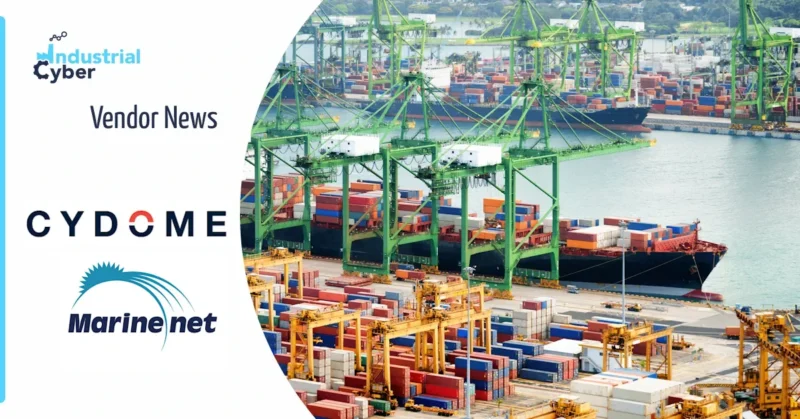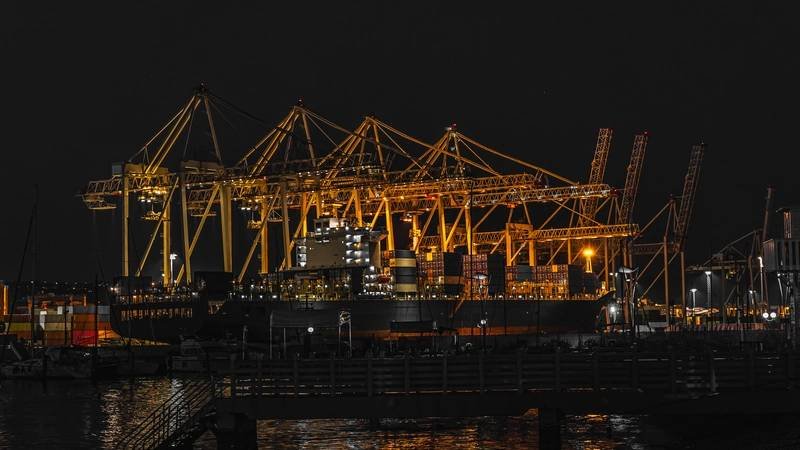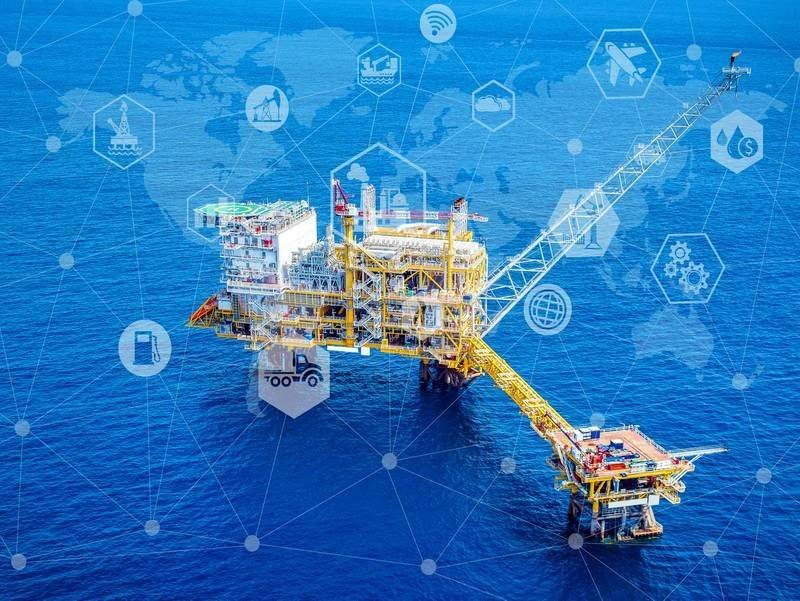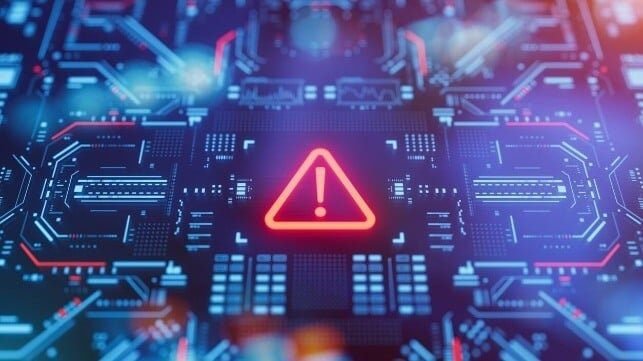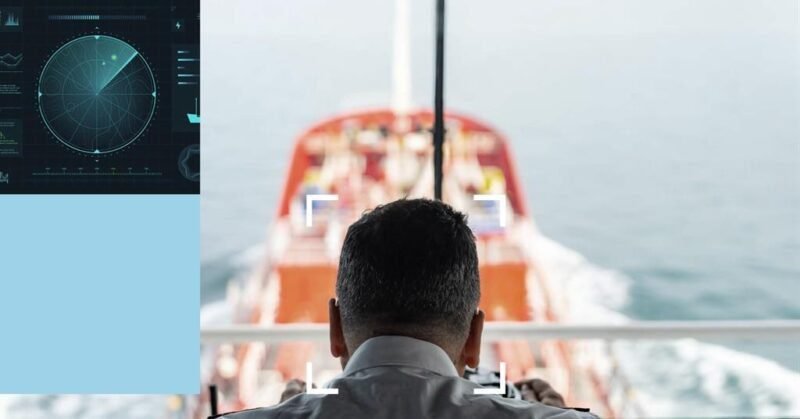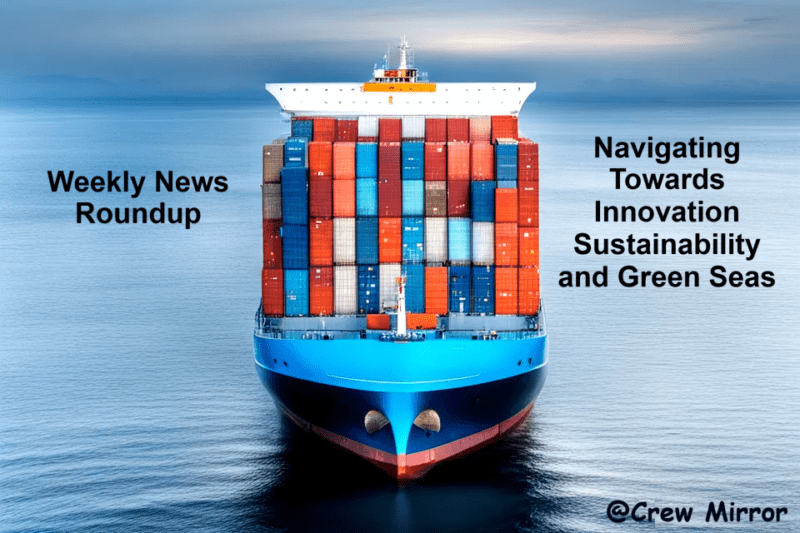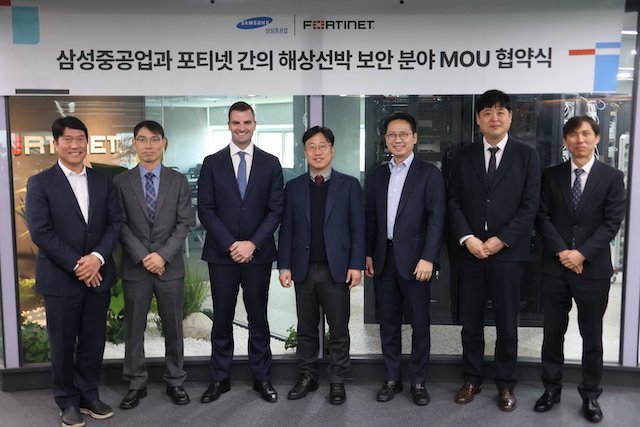30 Jul 2021
Inmarsat unveils the communications network of the future
Inmarsat unveiled plans for ORCHESTRA on 29 Jul 2021, the communications network of the future. In the largest ever transformation of its current world-class services, Inmarsat ORCHESTRA will bring together existing geosynchronous (GEO) satellites with low earth orbit satellites (LEO) and terrestrial 5G into an integrated, high-performance solution.

Whether for a ship in a crowded port, an aircraft preparing to land at LAX, or a defence force deployed in a remote location, ORCHESTRA is designed to meet evolving connectivity needs in the mobility market with a service unmatched by any competitor offering, planned or in existence.
“An orchestra brings different instruments together, each supporting the other and playing its role in the masterpiece. We’re building ORCHESTRA on the same concept,” said Rajeev Suri, CEO of Inmarsat. “By combining the distinct qualities of GEO, LEO and 5G into a single network, we will deliver a service that is far greater than the sum of its parts.
ORCHESTRA will open up a host of new and previously unattainable possibilities for industries across the world. New services include close-shore navigation for autonomous vessels, next-generation emergency safety services for maritime crews, secure and tactical private networks for governments and direct-to-cloud connections for airlines. New segments set to benefit from ORCHESTRA include energy rigs and drilling platforms, mid-market business aircraft, coastal vessels, smart passenger ships and urban air mobility. Reference.
30 Jul 2021
Singapore launches maritime decarbonisation centre
The Maritime and Port Authority of Singapore (MPA) today announced the formation of the Global Centre for Maritime Decarbonisation (GCMD) in Singapore and appointed Lynn Loo (pictured) as its chief executive officer.

Established with around $90m fund from MPA and six founding partners, BHP, BW Group, Eastern Pacific Shipping, Foundation Det Norske Veritas, Ocean Network Express and Sembcorp Marine, the centre aims to spearhead the maritime industry’s energy transition journey.
“The GCMD will collaborate with the industry to help reduce shipping’s greenhouse gas (GHG) emissions, implement identified decarbonisation pathways and create new business opportunities,” MPA said.
Loo, currently director of the Andlinger Center for Energy and the Environment at Princeton University, will be responsible for working with GCMD’s governing board to develop and execute the overall strategy for the new centre. She will also take the lead in building partnerships with the maritime industry, government agencies, international bodies and other regional and international maritime decarbonisation centres.
Andreas Sohmen-Pao, chairman of BW Group and the Singapore Maritime Foundation, will be appointed chairman of GCMD’s governing board, which will support the centre’s leadership team.
According to MPA, 31 organisations, ranging from shipping companies, classification societies, research centres, traders, energy players, terminal and tank operators, engineering companies, financial institutions, and industry associations have expressed interest in collaborating with GCMD. Reference.
30 Jul 2021
Rotterdam Welcomes Ever Given
The mega-sized containership M/V Ever Given arrived in the Dutch Port of Rotterdam early Thursday after being released by authorities in Egypt.

The ship was scheduled to dock at Rotterdam’s ECT Delta terminal for unloading until Aug. 3 before departing for Felixstowe, England, the port said.
It arrives four months late, however, for many of the owners of the cargo on board. The ship is laden with goods estimated to be worth over $700 million. Some of the cargo includes flat-pack furniture giant IKEA as well as Europe-bound apparel shipments for Tommy Hilfiger- and Calvin Klein-owner PVH Corp. and U.S. footwear maker Nike Inc., according to maritime tracking data.
The ship got stuck in the canal in high winds on March 23, halting traffic in both directions and disrupting global trade.
About 15% of world shipping traffic transits the Suez Canal, the shortest shipping route between Europe and Asia.
The 400-meter (1,312-foot) vessel, which is carrying about 18,300 containers, departed Egypt 22 days ago, 106 days after becoming stuck in the southern section of the waterway. Reference
29 Jul 2021
Cochin Shipyard launches 3 floating outpost vessels for BSF, 2 cargo ships
The Cochin Shipyard Ltd (CSL), on Wednesday, launched five vessels at one go from its building dock at Kochi. The new vessels are three Floating Border Outpost (FBOP) vessels for the BSF which will act as the strategic base stations at the borders. The other two are 8000 DWT Mini General Cargo Ships for JSW Shipping and Logistics Pvt Ltd.

The CSL officers said they achieved this rare feat, amidst the Covid pandemic and the lockdown restrictions. “The three FBOP vessels are important for the nation. We are proud to build these vessels indigenously for the safety of the country. JSW vessels, meanwhile, will be a boost for the business through coastal and inland waterways. We are glad to associate with JSW who has set in motion the most ambitious coastal and inland transportation systems in the country” said CSL’s chairman and managing director Madhu S Nair.
he three FBOP’s, with a length of 46 metres, are part of a series of nine vessels being built for the Water Wing of the Border Security Force. The mini general Cargo Ships launched are part of a series of four similar ships being built for the JSW group. These ships are expected to ply on the Coastal route between Jaigarh Port and Dolvi Steel Plant in river Amba near Dharamtar port. Reference
29 Jul 2021
World faces shortage of merchant sailors to crew ships -study
There could be a shortage of merchant sailors to crew commercial ships in five years if action is not taken to boost numbers, raising risks for global supply chains, a report said on Wednesday.

The shipping industry is already struggling with crewing shortfalls due to the coronavirus pandemic, a situation that will exacerbate expected labour supply problems over the next few years, according to the study published by trade associations BIMCO and the International Chamber of Shipping (ICS).
The Delta variant of the coronavirus has hit hard in parts of Asia and prompted many nations to cut off land access for sailors. That’s left captains unable to rotate weary crews and about 100,000 seafarers stranded at sea beyond their stints, in a flashback to 2020 and the height of lockdowns when over 200,000 merchant sailors were stuck on ships. read more
The study released by BIMCO and ICS estimated that 1.89 million seafarers were operating over 74,000 vessels in the global merchant fleet. Reference
29 Jul 2021
Robust Cybersecurity Solutions for Maritime Transportation
With growing cyberthreats to the public and private sectors, the transportation industry remains one of the major targets for cyberattacks. Most of these attacks are designed to gain access to sensitive data that contains financial and personal information.
One of the most common targets in the transportation sector is the maritime industry, which contributes to a quarter of the United States’ gross domestic product (GDP) as reported by the White House National Maritime Cybersecurity Plan. A successful cyberattack can cause disruption to daily operations, leading to significant economic impact worldwide. Cyberthreats are not only restricted to vessels and shipping companies; maritime ports and terminals have also been victims of cyberattacks.

Security Vulnerabilities
Vulnerabilities have been identified in industrial control systems (ICS) and operational technology (OT), such as GPS, alarm systems, satellite communications, automatic identification systems (AIS) and vessel integrated navigation systems (VINS).
According to maritime reports, vessels are used to transport 90% of global products, and GPS is a critical part of transportation at sea. GPS is used to identify the location of a ship using network satellites. It has been found to be vulnerable to jamming, a method to interfere with radio communication and prevent personnel from locating vessels, which can result in collisions.
Organizations should develop strategies, such as configuration of systems that can send alerts when anomalies are detected and constant monitoring of GPS data and cyberawareness processes that can help operators identify threats. ICS and OT systems should be assessed for security vulnerabilities and adequate measures should be taken to identify and immediately address threats.
Port Security
Ports are not immune to ransomware attacks. In fact, Washington’s Port of Kennewick confirmed that it fell victim to an attack in which the attackers placed strong encryption on the port’s servers and demanded funds to restore access to the servers. Although the port had previously taken steps to provide a safe and secure infrastructure, hackers were still able to find ways to access its servers.
Cybercriminals will continue to target the transportation sector. Methods of attack are becoming more sophisticated and organizations must adopt robust cybersecurity programs. Reference
29 Jul 2021
MSC takes delivery of largest cruise ship built in Italy
Swiss-based cruise line MSC Cruises has taken delivery of the largest cruise ship ever built in Italy, its new flagship MSC Seashore.
The vessel, which features the latest-generation of environmental technologies and equipment, is built by Italian shipbuilder Fincantieri.

The equipment includes hybrid exhaust gas cleaning systems (EGCS) and selective catalytic reduction systems (SCR), which are expected to achieve a 98% reduction of sulphur oxide (SOx) emissions and nitrogen oxide (NOx) emissions by 90%.
The wastewater treatment system has been designed in line with the International Maritime Organization’s (IMO) MEPC 227(64) Resolution to meet the purification standards.
The EVO class ship is also equipped with “Safe Air” UV-C lamp air purifier technology, expected to eliminate 99% of viruses and bacteria to support COVID-safe operations.
MSC Seashore will begin its first season in the Mediterranean, calling at Genoa, Naples, Pompeii, Messina, Valletta, Barcelona and Marseille.
It will make its North American debut in November 2021 in Miami. Reference
28 Jul 2021
Parliament Passes Marine Aids To Navigation Bill, 2021
Citing “enormous technological development” in the field of marine navigation and the need to regulate the same, the Parliament has passed the Marine Aids to Navigation Bill, 2021. It will repeal the Lighthouse Act, 1927, an over nine-decade-old law governing the traditional navigation aid, i.e. lighthouses.

Over the period of time, maritime sector has undergone massive change and there have been enormous technological development in the field of marine aids to navigation such as vessel traffic services and diversification of aids to navigation to include technical aids other than lighthouses and lightships.
Therefore, in order to provide appropriate statutory framework to reflect the technological advancement in marine aids to navigation and the expanded role of regulators and operators thereof so as to be in compliance with the obligation under the maritime treaties and international instruments to which India is a party, the Government has decided to make the proposed legislation by repealing the [Lighthouse] Act. Reference
28 Jul 2021
MOL Exploring Triangular Sails Attached to Ships’ Cranes to Boost Propulsion
Japanese shipping group Mitsui O.S.K. Lines has partnered with others to research and develop triangular sails that can be mounted on ships’ cargo cranes and other equipment to boost propulsion and reduce greenhouse gas emissions.
The joint research program brings together MOL, it’s dry bulk subsidiary MOL Drybulk, Oshima Shipbuilding and Iknow Machinery Co.

Unlike other wind propulsion technology, the Delta Sail can be mounted to existing equipment and unfurls much like traditional sails.
MOL notes that many of its vessels are already equipped with cargo handing cranes to which the sails can be attached, but the company plans to study the installation of sails on a broad range of ship types such as bulkers, wood chip carriers, and multi-purpose vessels.
The R&D project is just one of the initiatives that MOL group is working on to achieve its environmental targets, including achieving net zero GHG emissions by 2050. Other initiatives its undertaking include the Wind Challenger Project, which uses a type of telescoping hard sail, and the Wind Hunter Project, combining wind propulsion sailing technology and wind energy converted to generate a stable supply of hydrogen. Reference
27 Jul 2021
World’s 1st hydrogen-powered ferry delivered
Norwegian ferry operator Norled has taken delivery of “the world’s first liquid hydrogen-powered ferry” MF Hydra.
The vessel was designed by compatriot ship design and engineering company LMG Marin and constructed at Westcon shipyard.

A DNV-classed vessel will be able to reach a speed of 9 knots with fuel cells of 2×200 kW and generators and 2×440 kW which will power Shottel thrusters, the company stated.
Furthermore, the vessel is equipped with an 80 cbm tank for hydrogen storage. According to the LMG Marin, the ship will be ready to sail “once the supply is available, hopefully in the next few months.”
Norled has already selected industrial gas and energy company Linde to supply the vessel with liquid hydrogen.
Liquid hydrogen will be supplied from Linde’s new 24MW electrolyzer at the Leuna Chemical Complex in Germany, which will use Proton Exchange Membrane (PEM) technology to produce green hydrogen.
The fuel cell-powered ferry is expected to reduce its annual carbon emissions by up to 95 per cent, the company noted.
It is scheduled to sail on the triangular route between Hjelmeland-Skipavik-Nesvik in Norway. Reference
27 Jul 2021
Belgium Expands Vaccination Campaign to All Seafarers
The government of Belgium has expanded its seafarer vaccination campaign to include all seafarers visiting Belgian ports, regardless of nationality.
Starting today, mobile medical teams will have the ability to go on board vessels offering single-dose Johnson & Johnson vaccines to crews, according to the Royal Belgian Shipowners’ Association which helped organize the campaign.

Belgium joins other countries such as the United States, United Kingdom, Netherlands, Germany and Greece as one of the few countries currently providing vaccines to seafarers. It’s the first to do so on board ships with a mobile medical team.
Vaccines are available to all seafarers who are staying and working on board a vessel docked in a Belgian port, as well as those signing on or off from vessels within the country. Reference
26 Jul 2021
Let’s not talk about nuclear ships
by Andrew Craig-Bennett
You need a degree in physics to understand the subject of nuclear-powered ships. The technical issues that come with nuclear power at sea are not easy for an amateur, such as a generalist manager, to understand, and unless you can chat about why Hyman Rickover didn’t want liquid salt cooled reactors in 1952, why the positive void coefficient in an RBMK is so large, and how you can get nuclear weapons out of a thorium reactor despite the modern myth to the contrary, you don’t begin to understand which projects are feasible and which are selling snake oil.
The legal issues that come with a nuclear-powered merchant ship operating with cargo on international voyages are not hard to understand, but they are very annoying.

I’m not going to talk about either of those things. I’ll stick to something that we all understand – the crew. Nuclear-powered ships are a good idea for two reasons. We all know that they do not emit greenhouse gases, do not depend on the sun or the wind, can go for years without refuelling and can be of high power, i.e., fast. The other reason is that they will do more than anything else to improve the status, pay, and conditions of the seafarer.
People are going to be about as keen on the unmanned nuclear merchant ship as they are on the unmanned civil airliner. We want a nuclear ship to be carefully designed and built, to be carefully maintained, to operate under well proven procedures and to have a very good crew. Which means that the crew of a nuclear ship are going to have to be well paid, and well looked after.
Which leads me to the real problem with the nuclear-powered merchant ship. She needs a Reactor Officer. Reactor Officers are scarce, and the laws of supply and demand mean that they do not come cheap. They take years to learn their trade, starting – starting, mind – with that physics degree. And the nuclear navies – be they Russian, Chinese, American, French, Indian or British – hang on to their Reactor Officers, for fear that they might decide that running a power station and getting home to see the family every day beats going to sea, and word reaches me that in some of those nuclear navies, Reactor Officers are lured back to sea on film star wages until they are into their sixties.
Nuclear ships are not silly, and they need not be dangerous. The problems are getting the first cost down to something more affordable (and let us remember that quite a few serious people, like Lloyds’ Register, are working on civil marine reactors) and finding and educating, as well as training, the crews. The real winners are going to be the crews. And that is a good thing. Reference
Note: This is the compilation of news published from various sources. The references of source are given with each news item.
Share it now








